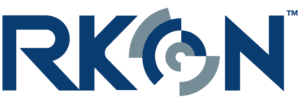Even before the work-from-home fallout of COVID-19 wreaked havoc upon existing IT infrastructures, there was a large push for organizations to develop and implement remote-work solutions for their employees. A recent Gartner survey found that 80% of U.S. based organizations have plans in place to allow employees to work remote at least part-time as the pandemic slowly winds down, while 47% are looking to provide a full-time work-from-home options.
When choosing to build out these IT infrastructures, many believe you are forced to choose between remote desktop software and cloud computing, when this is largely untrue. In fact, comparing these two technologies is missing the point; neither is intended as a replacement for the other, but they do both offer seamless information access and organizational collaboration.
Remote Desktop vs. Cloud Computing: Differences
Having the ability to constantly access necessary information, regardless of time or place, is a prerequisite for the modern world of business. As organizations are beginning to face the often-imposing task of preparing remote-work infrastructure, many are wondering how remote desktop and cloud computing services stack up against each other.
Overall, cloud computing services have become an increasingly popular method to enable remote work, frequently leaving remote desktop options unexplored. While cloud computing services are an obvious answer, remote desktop virtualization may provide a better option in some situations. Discover the nuanced differences between these two solutions below:
Remote Desktop |
Cloud Computing |
|
|
|
|
|
|
|
|
|
|
|
|
The core difference between remote desktop software and cloud computing lies in the type of access that is allowed. With a remote desktop, a user has limited access to files, applications, and other organization resources through use of a specific desktop. In the cloud, files, applications, and any other resource can be accessed and downloaded from any device at any time. This is the core difference that should be accounted for when analyzing remote desktop virtualization vs. cloud computing.
Remote Desktop vs. Cloud Computing: Similarities
While these technologies differ in critical ways, it’s also important to understand what they share. Remote desktop and cloud computing services offer many of the same features and provide similar services.
- Both technologies provide remote access to data without the need to install additional software on end-user machines
- Users can access data stored on disparate servers and systems without being compromised by their machine’s processing power or storage capacity
- Data access is seamlessly, whether the access point is virtual or physical, meaning that the need to manage devices or applications is not necessary
- Tight security protocols exist in both remote desktop and cloud computing services, meaning security can be maintained in the event of end-user machine failure or a stolen device.
- Remote desktop and cloud computing are both built around the core principal of enhanced collaboration, giving teams the access to the information they need at any moment
Breakdown
While many organizations are led to believe that you must choose remote desktop virtualization vs. cloud computing, it is crucial to understand the one does not necessarily need to replace the other. Remote desktop and cloud-based environments are not mutually exclusive, with many organizations utilizing both for their operations. It may seem that a cloud service is the logical standalone, especially because cloud computing is the current zeitgeist, but in truth many organizations could benefit from a dual-use scenario.
The key to utilizing these technologies comes down to the necessary collaboration and data security required for successful operation. Used together, organizations can optimize access to important information, while lowering costs in terms of management and updates, all while minimizing overall complexity.
When implemented together, these technologies can foster an environment that promotes flexibility and scalability, along with trustworthy security and reliability. In turn, the combination will provide greater collaboration possibilities, improve information-sharing to maximize efficiency, and remain compliant with industry regulations.
Want to learn more? Browse through our IT Transformation, Compliant Cloud, and Microsoft Azure Migration services. If your organization is in need of current infrastructure assessment, or to manage your cloud environment – RKON offers complete cloud coverage as part of our commitment to delivering Quiet IT.

